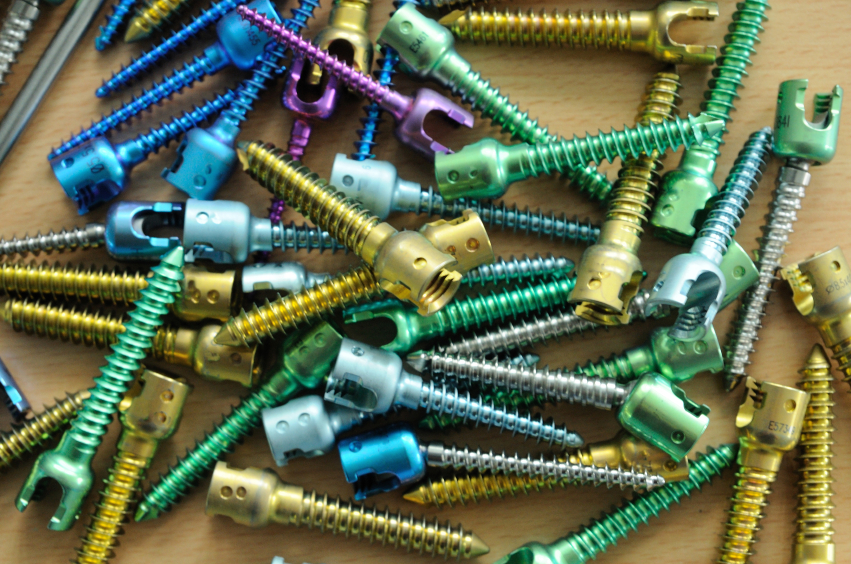Like a pro golfer swears by a certain brand of clubs or a marathon runner has a chosen make of shoes, surgeons can form strong loyalties to the tools of their craft. Preferences for these items — such as artificial hips and knees, surgical screws, stents, pacemakers and other implants — develop over time, perhaps out of habit or acquired during their training.
Of course, surgeons should have what they need to be at the top of their trade. But the downside of too much variation is that it can drive up the costs of procedures for hospitals, insurers and even patients. When a hospital carries seven brands of the same type of product instead of one or two, it's not as likely to get volume discounts. Moreover, if hospitals within a health system negotiate independently of one another, they may pay drastically different prices for the exact same item.
Carrying many brands of a given item may also increase risks for error and patient harm. Staff members need to be trained and competent in a variety of tools; the greater the number of tools, the greater the risk for error.
These physician preference items are no small contributor to health care costs. Around the year 2020, medical supplies are expected to eclipse labor as the biggest expense for hospitals, according to the Association for Healthcare Resource and Materials Management. Higher costs for physician preference items are major drivers of this increase.
At Johns Hopkins Medicine, when we sought to reduce the costs of supplies, we knew it couldn’t be led by finance alone, and it shouldn’t focus solely on costs. One of the enduring lessons in health care improvement is that change progresses at the speed of trust. As such, change happens best when it’s done "with" clinicians and not "to" them. We have turned to our clinical communities — peer groups of experts from across our health system's six hospitals who work together to tackle issues related to quality, patient safety and value of care. There are now 19 clinical communities across Johns Hopkins Medicine in such areas as surgery, joint replacement and blood product utilization. These communities provide a venue for members — who previously had scant opportunities to collaborate across Johns Hopkins-affiliated hospitals — to tackle common problems, share best practices and make changes that benefit the entire organization.
To foster trust, we agreed on two key principles. First, physician choice in supplies would be maintained, although physicians would be made fully aware of the savings and risks of different items. Second, physicians would benefit from some of the savings. While the law forbids us from putting money back into their pockets, we can use the savings to support their programs, such as by investing in equipment or participating in a registry, to help them better monitor quality.
Working within those principles, our Spine Clinical Community convened "about a dozen surgeons, nurses, anesthesiologists and other clinicians to decide what Johns Hopkins should pay as the true value — instead of the list price — for products used in spinal surgery," according to our Dome newsletter. With the clinical community's analysis providing the justification for lower prices, the contracting manager informed vendors that all Johns Hopkins affiliates would pay the same price for these items. The new pricing schedule that resulted from this is projected to save the health system $3.3 million a year.
The article explains: "The key is drawing upon the expertise that Johns Hopkins clinicians collectively hold. A product analysis prepared by a dozen or more surgeons from across Johns Hopkins Medicine holds significant sway during supply contract negotiations. 'Without it, vendors can more easily charge a premium for a product that isn’t unique,' says Sibley Memorial Hospital neurosurgeon Joshua Ammerman, a clinical lead for the Spine Clinical Community."
The article points to another money-saving campaign, an effort by our Blood Management Clinical Community to reduce the number of red blood cell units that are transfused unnecessarily. While it had been standard to give two units at a time, in many cases, the evidence calls for just one unit. Now, when staff members place red blood cell orders for patients with hemoglobin levels at or above the optimal threshold, a pop-up alert informs them that transfusion requirements can be decreased while avoiding adverse outcomes. Through this and other strategies, we hope to conserve more of this limited, lifesaving resource by 10 percent, for an annual savings of $2.8 million.
Within any hospital or health system, there can be huge variability in how care is delivered. That variability may drive up costs while undermining quality. Some might be tempted to point the finger at physicians and limit their autonomy. But we have found that the solution, in fact, requires that we engage physicians more deeply, mine their wisdom, and ask them to lead these efforts to enhance safety, quality and value.

Pingback: Reblogging: “To Engage Physicians in Cost Savings, Start with Quality” | Dr. Tavares' Blog on Patient Safety and Mental Health
Pingback: To Engage Physicians in Cost Savings, Start with Quality | Doctella
Can you be more specific about the content of your article? After reading it, I still have some doubts. Hope you can help me.
I don't think the title of your article matches the content lol. Just kidding, mainly because I had some doubts after reading the article.
Thank you for your sharing. I am worried that I lack creative ideas. It is your article that makes me full of hope. Thank you. But, I have a question, can you help me?
Clear, concise, and effective. Enjoy racing club dubai — Meydan's live races. mobile and desktop friendly. post‑race interviews, highlights and replays. mobile and desktop friendly.
Your point of view caught my eye and was very interesting. Thanks. I have a question for you.